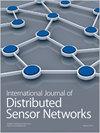Modeling and Performance Analysis of Flying Mesh Network
IF 2.5
4区 计算机科学
Q3 COMPUTER SCIENCE, INFORMATION SYSTEMS
引用次数: 0
Abstract
Maintaining good connectivity is a major concern when constructing a robust flying mesh network, known as FlyMesh. In a FlyMesh, multiple unmanned aerial vehicles (UAVs) collaborate to provide continuous network service for mobile devices on the ground. To determine the connectivity probability of the aerial link between two UAVs, the Poisson point process (PPP) is used to describe the spatial distribution of UAVs equipped with omnidirectional antennas. However, the PPP fails to reflect the fact that there is a minimum distance restriction between two neighboring UAVs. In this paper, the β -Ginibre point process ( β -GPP) is adopted to model the spatial distribution of UAVs, with β representing the repulsion between nearby UAVs. Additionally, a large-scale fading method is used to model the route channel between UAVs equipped with directional antennas, allowing the monitoring of the impact of signal interference on network connectivity. Based on the β -GPP model, an analytical expression for the connectivity probability is derived. Numerical tests are conducted to demonstrate the effects of repulsion factor β , UAV intensity ρ , and beamwidth θ on network connectivity. The results indicate that an increase in UAV intensity decreases network connectivity when the repulsion factor β remains constant. These findings provide valuable insights for enhancing the service quality of the FlyMesh.飞网状网络建模与性能分析
在构建称为FlyMesh的强大飞行网格网络时,保持良好的连接是一个主要问题。在FlyMesh中,多个无人机协同为地面移动设备提供连续的网络服务。为了确定两架无人机之间空中链路的连接概率,使用泊松点过程(PPP)来描述配备全向天线的无人机的空间分布。然而,PPP未能反映两个相邻无人机之间存在最小距离限制的事实。本文采用β-GPP对无人机的空间分布进行建模,其中β表示附近无人机之间的排斥。此外,还使用大规模衰落方法对配备定向天线的无人机之间的路由信道进行建模,从而监测信号干扰对网络连接的影响。基于β-GPP模型,导出了连通概率的解析表达式。进行了数值测试,以证明排斥因子β、无人机强度ρ和波束宽度θ对网络连通性的影响。结果表明,当排斥因子β保持不变时,无人机强度的增加会降低网络连通性。这些发现为提高FlyMesh的服务质量提供了宝贵的见解。
本文章由计算机程序翻译,如有差异,请以英文原文为准。
求助全文
约1分钟内获得全文
求助全文
来源期刊
CiteScore
6.50
自引率
4.30%
发文量
94
审稿时长
3.6 months
期刊介绍:
International Journal of Distributed Sensor Networks (IJDSN) is a JCR ranked, peer-reviewed, open access journal that focuses on applied research and applications of sensor networks. The goal of this journal is to provide a forum for the publication of important research contributions in developing high performance computing solutions to problems arising from the complexities of these sensor network systems. Articles highlight advances in uses of sensor network systems for solving computational tasks in manufacturing, engineering and environmental systems.

 求助内容:
求助内容: 应助结果提醒方式:
应助结果提醒方式:


